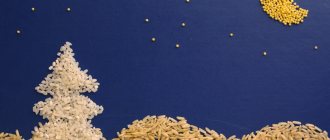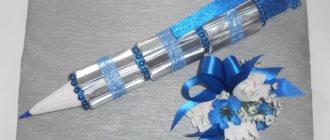Optics
Adapters from bayonet to M42 thread are sold for all SLR cameras.
Using such an adapter, you can easily adapt an inexpensive manual lens for macro photography needs, however, to do this you will have to buy a couple more sets of extension rings for it.
This solution is suitable even for a Nikon camera, which has a longer flange length than 42mm optics.
The picture shows one of the sets of rings that can be bought on the used photographic equipment market. You just need to keep in mind that a similar set of rings for lenses with a 39mm thread was previously produced.
There are special devices for macro photography such as PZF, but they are heavy and completely inconvenient for use in field conditions.
At low magnification, part of the adapter sticks out in front of the lens, which can prevent you from bringing the lens closer to the subject at the required distance.
Large weight and dimensions make such devices inconvenient for macro photography in the field.
The picture shows a device for macro photography PZF with a screwed-on lens and an adapter from the mount to the M42 thread.
A lens with screwed-on rings and a bayonet mount can be successfully folded into a case along with other lenses, which distinguishes this design from the PZF attachment.
A flash circuit containing 5 to 10 LEDs operates at 3 V
Almost all inexpensive commercial LED flashes have a power supply of 4.5 V - three AA or AAA batteries - since white LEDs require a voltage of 3.3 to 3.5 V to fully turn on. Thus, there is a supply voltage mismatch between LED and traditional 3V incandescent flash units. The voltage difference makes it difficult, but not impossible, to switch from older flash units to new LED ones. A simple diagram shown in Fig. 1 solves this problem.
When you apply a 3V supply voltage to IC1, the IC's outputs produce high-level pulses that turn on Q1. The collector of the transistor is connected to ground. The current flowing through inductor L1 increases linearly from 0A to a certain maximum current until the output of IC1 turns off (Fig. 2). The operation of the circuit is only possible if the inductor does not go into saturation, so the correct choice of inductor is very important. At this moment, the accumulated magnetic field of the inductor sharply decreases, causing the appearance of reverse voltage, which transfers D1 to a conducting state. The energy stored in L1 is transferred to C2, where it is stored until there is enough energy to light the LEDs. The relationship between supply voltage (VIN), inductance (L), maximum current (IPK), and microcontroller on time (TON) is determined by the formula VIN = LxIPK/TON.
With a power supply voltage of 3 V, an inductor rated at 10 µH and a saturation current of more than 1.5 A should be used. You can calculate that with these parameters, the turn-on time of the microcontroller is 5 µs. The program shown in Listing 1 implements this charge pump generator turn-on time. This program is so simple that it occupies only 22 bytes of the 1 kB program memory area. The charge pump generator control function is easy to understand. The Sbi portb, 2 instruction tells the microcontroller to issue a logic high level to enable charge pumping. Since the microcontroller operates from the built-in oscillator at a frequency of 1.2 MHz, each NOP (empty) instruction takes one clock cycle, or 0.83 µs, to execute, so the turn-on time of the transistor is 5 µs. Similarly, the Cbi portb, 2 instruction tells the microcontroller to output a logic low to turn off charge pump.
Measurements show that the circuit operates at a switching frequency of 100 kHz and its net output is 17 V / 35 mA for five LEDs and 32 V / 20 mA for 10 LEDs. Unlike traditional voltage boost circuits, this circuit does not use resistors as voltage dividers or sensors, which waste energy and cause unwanted heat.
Source
Light.
When photographing all kinds of spider bugs, it is very difficult to use a tripod due to the restlessness of the insects. When shooting handheld, for short shutter speeds, there may simply not be enough light. Even on the sunniest day there is not enough light, and the only light source may not allow you to work out details in the shadows.
If you are not professionally involved in macro photography, you can use this design, the construction of which will take at most half an hour.
Everything is assembled from ready-made parts, except for two slats, which can be made from getinax, textolite or fiberglass.
I did not list aluminum-based alloys among the materials, since without galvanic coating they get dirty, and they are not very pleasant to use in winter.
The next picture shows the slats with screws and light synchronizers. It is better to use light synchronizers whose fastening threads are cut into metal rather than plastic.
Drawing of the slats. All linear dimensions in the drawing are in millimeters. The thickness can be 5-6 millimeters, depending on what material can be obtained.
To expand the capabilities, you can drill a few additional holes in the slats.
If you have a 1/4" inch tap, you can cut threads into the slats to prevent the fasteners from falling out. However, you don't have to do this. This will not affect the performance of the structure in any way.
Crafts made from reflective fabric
Description: this master class is intended for children 6-8 years old, educators, additional education teachers, and parents.
Purpose: reflector for outerwear, school backpack, bag
Goal: Making crafts with your own hands Objectives: • introduce children to the purpose of flicker in road safety; • create a positive emotional mood in children; • practice cutting out different shapes from fabric and reflective tape according to a template; • strengthen children's skills in working with scissors and glue; • develop eye, fine motor skills, memory, interest, intelligence, observation, creativity; • cultivate accuracy in work, attention, and the desire to complete what is started.
Flickers are in our hands, Made now. We became more noticeable at once, You, driver, slow down the gas!
Rules for working with scissors and PVA glue: - use scissors for their intended purpose; - do not leave them open; — when working, do not hold the scissors with the ends up; - do not leave them open; - store scissors in a certain place - in a stand or case; — it is necessary to apply the glue in an even thin layer; - take the amount of glue that is required to complete the work at this stage; - when working with glue, use a brush if necessary; - try not to get the glue on your clothes, face, or especially your eyes. - work with scissors only at your workplace; - use a napkin (remove excess glue, wipe your hands if necessary)
Stages of the work 1. On cardboard, draw with a pencil templates for the base of the flicker - figures of different shapes (diamonds, with a side of 9 cm, circles, hearts, d-9 cm and others)
Daria Ugolkova
Master class “Do-it-yourself flickers or retroreflective devices”
Flickers, reflective devices, reflective elements
- as soon as they are not called! There is probably not a single person who does not know what it is. And yet, I repeat - these are elements made of special materials that have the ability to return a beam of light back to the source.
They are made in order to make a person more visible on the road in the dark, at any time of the year.
According to data from the website of the State Traffic Inspectorate - and in accordance with Decree of the Government of the Russian Federation dated November 14, 2014 No. 1197, changes to the Traffic Rules of the Russian Federation came into force on July 1, 2015.
According to the new edition of the Rules, from July 1, 2015, when crossing the road and moving along the side of the road or the edge of the roadway in the dark or in conditions of insufficient visibility, pedestrians are recommended , and outside populated areas, pedestrians are required to carry objects with reflective elements and ensure the visibility of these items by vehicle drivers.
Now you can purchase flickers in the form of: toys, bracelets, stickers, keychains, thermal stickers, patches, vests, etc., etc.
I offer you a master class flicker - a do-it-yourself talisman!
Mascot
— brings good luck, protects its owner.
And Flicker, a
hand-made talisman, will doubly protect you or your children!
This master class will be useful for educators in working with children and parents, in preventing and promoting traffic rules, as well as strengthening child-parent relationships.
Teachers, when organizing work on life safety with schoolchildren and their parents.
And also for schoolchildren - creative, active, inquisitive.
- thick cardboard (for example, boxed)
- self-adhesive, reflective paper (yes, yes there is such a thing)
- blank for a brooch (sold in handicraft stores)
- hot melt glue and hot melt gun
Let's get started!
1. Choose the shape and size of the future flicker. Cut out the base from thick cardboard.
2. We trace the base in a mirror image on the back side of the reflective paper.
3. Glue the base and paper together. Let's trim the edges.
4. Using hot-melt glue and a hot-melt gun, attach the workpiece - the brooch.
Flicker - the talisman is ready!
This flicker will bring joy to you and your children!
I wish you safe roads!
Attached files:
| mk-flikery_luh87.pptx | 3108.77 KB | Downloads: 100 |
Master class “Do-It-Yourself Topiary” I want to share with you how I make “Topiary Ariya” with my own hands. To complete this “Topi Aria” you will need: A flower pot.
DIY toys. Master class Modern man is no longer so easily surprised by the sophistication and uniqueness of a soft toy, because the market is oversaturated with very diverse ones.
Master class “Do-it-yourself flicker” Master class with children and parents “Do-it-yourself flicker” (within the framework of the social project “Literate Pedestrian”) Relevance: large number.
Master class “Geometrician, or Mathematical tablet” with your own hands “GEOMETRIC” or MATHEMATICAL TABLET. Math Tablet is a board game that allows for exploration.
Master class “Do-it-yourself labyrinth” Master class “Do-it-yourself labyrinth” The labyrinth has always been considered a difficult test, requiring attentiveness and perseverance. Of course, for children.
Master class “Do-it-yourself crayons” How nice it is in kindergarten in the summer! During the summer health period, my colleagues and I try to create favorable conditions for our children.
Master class “Autumn tree” with your own hands Master class “Autumn tree” with your own hands. Today I want to show you how to make an autumn tree with your own hands.
Master class on making a florarium with your own hands. A florarium is flowers placed behind glass. This is a living plant composition located in a glass terrarium - a jar, glass, bottle.
DIY gift for Easter. Master class The Feast of the Holy Resurrection of Christ, Easter, is the main event for Orthodox Christians, the largest Orthodox holiday. Easter.
Do-it-yourself pom-poms from bags - master class Such pom-poms are perfect for step aerobics and will colorfully decorate a performance, especially if the performance is held in honor of someone.
Our master class today is part of the large project “Light Mania - Family Game,” the goal of which is to popularize the use of reflective elements by children and adolescents and reduce injuries among pedestrians. One of the factors in the increase in the number of accidents involving children was the invisibility of young pedestrians on the roadway, especially in the morning and evening hours. About 22% of all children injured in road accidents are under 5 years of age. Improving the visibility of pedestrians, especially in conditions of insufficient illumination of the street and road network, can be achieved with the help of special reflective elements on clothing.
The possibilities for using CB elements are very wide: badges, keychains, pendants, stickers, self-fixing bracelets, armbands. All these types of SV elements are not only a means of passive safety for road users, but also a fashion accessory. SV reflectors are usually called flickers or glims.
The topic of our master class: “Making flicker - appliqués.”
Purpose of the work: to explain the importance of retroreflective elements for preserving life in the city road network.
· formation of ideas about the types of SV reflectors;
· practical training for parents in making appliqués for clothing;
· increasing parents' interest in the problem of children's use of SV elements.
Dear parents, we will briefly introduce you to the features of reflective materials. A retroreflector is a technologically complex combination of microscopic lenses that refract the light beam in the opposite direction, a reflective aluminum layer (mirror) and a durable fabric base. The reflector ensures visibility of the object more than 150m away. Therefore, our task is to protect the lives of children on the road using an SV reflector, or flicker. Flickers are already on sale. But you can make them yourself from reflective fabric and additional decorative elements.
Now you and I will make a flicker with our own hands that can decorate a hat, T-shirt, sweater or jacket, jacket sleeve or headband. Our flicker is an application of reflective fabric and decorative additions.
Making flicker – “Dog” applique
We will need:
cardboard templates, reflective tape, scissors, thread with a needle, glue, bow, eye.
Stage 1. In front of you are cardboard templates and reflective tapes. We put the template of the dog figurine on the NE fabric and trace it along the contour.
Stage 2. Carefully cut out the figure.
Stage 3. We place a “dog” made of SV fabric with the reflective side up on the selected base (hat, jacket sleeve, T-shirt, headband, etc.) and sew the figure with an “over the edge” seam.
Stage 4. We decorate the dog with additional elements: sew a bow to the dog’s neck.
Glue the eye with Super Moment glue.
Flicker is ready. It will delight your child; clothes with it become brighter and more interesting. And most importantly, the flicker ensures the safety of the child’s movement in the street network.
Take care of your safety and the safety of your children yourself, help drivers notice you on the road in time, wear flickers: they are visible from afar in any weather.
And now, if you liked my master class, please raise up the prepared flickers with a red border, if you have any comments on the master class - flickers with a green border.
Inexpensive and effective. How to upgrade your camera with your own hands
We recently published a two-part comprehensive guide to photography accessories. The first episode dealt with non-electronic gadgets, and the second part was exclusively dedicated to electronic devices. Some of the accessories cannot be created from improvised means, but there are also those that, with some diligence, are quite possible to make yourself. We have collected just such cheap, but no less effective solutions in our truly life hacking collection. It even includes solutions that professionals will not disdain. All “photo hacks” are inexpensive, elegant in implementation, and highly useful.
Petrolatum
The Vaseline trick should be called “dirty” and not very popular. The idea is that clear Vaseline can simulate background blur when the camera sensor and optics don't allow it to do so effectively. Of course, you won’t be able to get high-quality, uniform blur as when using high-aperture optics on a full frame, but a certain charm in using Vaseline is obvious. Just under no circumstances should you apply Vaseline directly to the front lens lens. Use a protective filter or, at worst, a transparent plate. In general, the method has a right to life, judge for yourself:
Vaseline filter in action
Something similar happens when using the creative filter made from unpainted film, which we discussed above.
Protective filter with a layer of Vaseline applied
Polarizing filter
A polarizing filter allows only direct light rays to pass through, blocking reflected ones with a specific polarization. Rotating the filter achieves the desired effect and eliminates glare. As a result, the grass becomes greener, the sky bluer, the water clearer, and the clouds acquire a mesmerizing volume. It is impossible to make a polarizing filter at home; you can only borrow it from other devices. Without delving into physics, a polarizing filter is installed on any liquid crystal display. From there it can be removed, although the process is quite labor-intensive. Typically, a polarizing filter is glued to the outside of the display glass. Without such a filter, the display will simply glow with white pixels. To remove the filter, a display from an old non-working gadget, for example, a long-broken smartphone or a defunct camera, is suitable. After removing the filter, you should carefully remove any remaining adhesive from it. You can cut a circle from the resulting piece and attach it, for example, to a mount from any other filter.
Source
Camera flash circuit
The work was carried out with a Kodak Prostar 222 film soap dish. Attention, there is dangerous high voltage inside! Before disassembling the camera, remove the batteries and discharge the flash. After opening the camera, be sure to remove the residual charge from the storage capacitor - short the electrodes with an insulated conductor with a 100-200 ohm resistor or, in extreme cases, with a screwdriver. Watch a video. The flash circuit was copied from the board and shown in the photo.
How does photo flash work? The basis of the flash is the already familiar voltage converter . Transistor V1 operating in a blocking generator generates pulses with a frequency of several kilohertz. High voltage pulses from the step-up winding of transformer T1 are rectified by a diode and accumulated on a high-voltage electrolytic capacitor. The neon lamp S2 is powered through the reduction resistor R2, which lights up when the electrolytic capacitor is fully charged. Through resistor R3 connected to the neon light bulb, a capacitor with a capacity of 22nF is charged. After charging the storage capacitor, the flash lamp connected in parallel with the capacitor is started by pressing a button. The button discharges the 22nF capacitor through the primary winding of the starting transformer T2. A high voltage pulse from the secondary winding is supplied to the trigger electrode of the flash lamp. Due to ionization from a high-voltage pulse, a discharge and flash of light occurs inside the lamp. Since the camera is film, the flash power is comparable to the flash power of a digital SLR camera.
Unscrew the side screws Unscrew the internal screw Kodak internals Discharge the capacitor Kodak boards Flash board
The flash board was connected to the battery compartment according to the circuit diagram. The start button contacts on the board were removed and a stationary button was installed instead. When checking the circuit, be especially careful; there is HAZARDOUSLY life-threatening voltage across the storage capacitor. After testing the circuit, the flash was mounted in a housing made from car lamp packaging.
It is planned to conduct several experiments with the flash unit and make other devices.
Don't throw away old soapbox photos, you can make useful things out of them. And if the desire to make something like a shocker remains, then here is a direction for purchasing the necessary part.
Source











